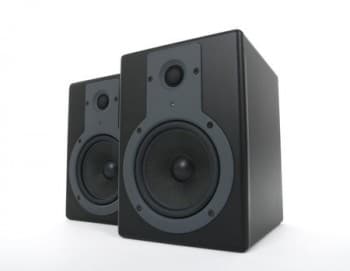Understanding Input Sensitivity for Powered Monitors

Having the right pair of monitors is only half the battle. Making sure they’re set up, positioned and equalized properly is just as important because it can drastically affect the “truth” of what you hear.
One of the things to double check when setting up your monitors is the input sensitivity. Typically, your powered monitor will have a knob or switch on the back that allows you adjust from a +4 dBu to -10 dBu. But what do these numbers actually mean?
Input sensitivity is the maximum voltage strength of an input signal that an amplifier can handle and still produce unclipped full output. This is important to understand because not all audio signals have the same voltage. And, when a signal’s voltage exceeds the input sensitivity of an amp clipping and distortion can occur.
When you set your input sensitivity lower (+4 dBu, for example), you’re saying that your amp will be able to handle “hotter” or stronger signals. It does this by applying a form of signal attenuation. Because of this attenuation, the amp is less “sensitive” to these stronger signals, meaning they won’t cause it to clip.
Setting your sensitivity to the to the highest point (typically -10 dBu) means no attenuation will be applied and your amp and signal source are in unity gain, that is they are the same levels.
Professional-level balanced signals, like what’s used in recording studios, typically have a voltage of around 2.83V. This is the output of your audio interface. Consumer-level non-balanced signals are typically between 0.7V and 2V. Because the pro-grade signals are hotter, you always want to make sure the amps on your monitors are set to a lower sensitivity, such as +4 dBu. (The numbers appear reversed, where +4 is “low” and -10 is “high,” because they’re describing the strength of the incoming signal as opposed to the level of attenuation in the amp.)
The whole purpose of your monitors is to give you a flat, clean feedback of your mix. If the input sensitivity isn’t set properly, however, they may be giving you a distorted representation of your mix. Whenever you’re working with audio recording and mixing, make sure your monitors’ input sensitivity is set to handle professional-level balanced signals by setting them to +4 dBu.




